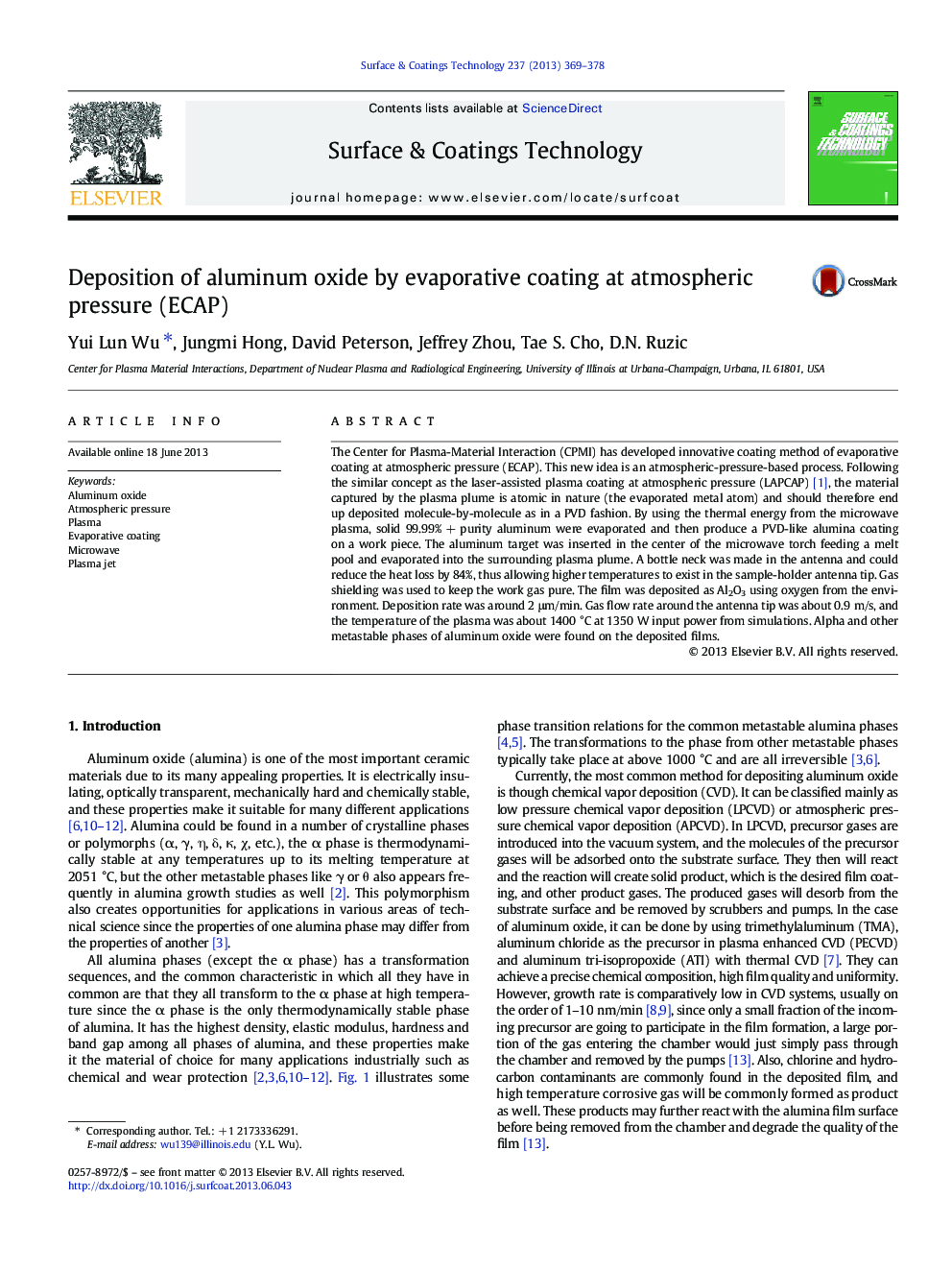| Article ID | Journal | Published Year | Pages | File Type |
|---|---|---|---|---|
| 8028782 | Surface and Coatings Technology | 2013 | 10 Pages |
Abstract
The Center for Plasma-Material Interaction (CPMI) has developed innovative coating method of evaporative coating at atmospheric pressure (ECAP). This new idea is an atmospheric-pressure-based process. Following the similar concept as the laser-assisted plasma coating at atmospheric pressure (LAPCAP) [1], the material captured by the plasma plume is atomic in nature (the evaporated metal atom) and should therefore end up deposited molecule-by-molecule as in a PVD fashion. By using the thermal energy from the microwave plasma, solid 99.99% + purity aluminum were evaporated and then produce a PVD-like alumina coating on a work piece. The aluminum target was inserted in the center of the microwave torch feeding a melt pool and evaporated into the surrounding plasma plume. A bottle neck was made in the antenna and could reduce the heat loss by 84%, thus allowing higher temperatures to exist in the sample-holder antenna tip. Gas shielding was used to keep the work gas pure. The film was deposited as Al2O3 using oxygen from the environment. Deposition rate was around 2 μm/min. Gas flow rate around the antenna tip was about 0.9 m/s, and the temperature of the plasma was about 1400 °C at 1350 W input power from simulations. Alpha and other metastable phases of aluminum oxide were found on the deposited films.
Related Topics
Physical Sciences and Engineering
Materials Science
Nanotechnology
Authors
Yui Lun Wu, Jungmi Hong, David Peterson, Jeffrey Zhou, Tae S. Cho, D.N. Ruzic,
